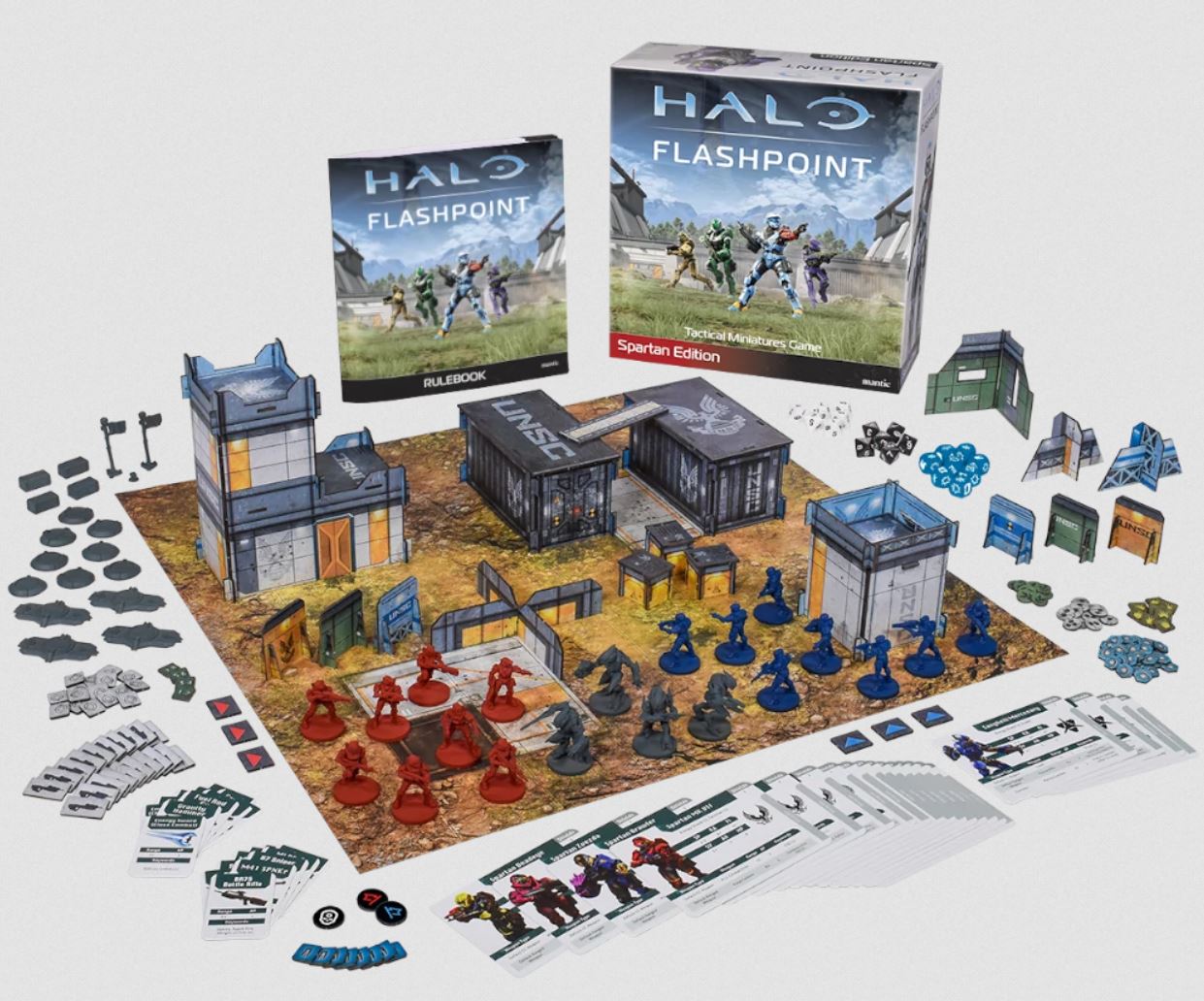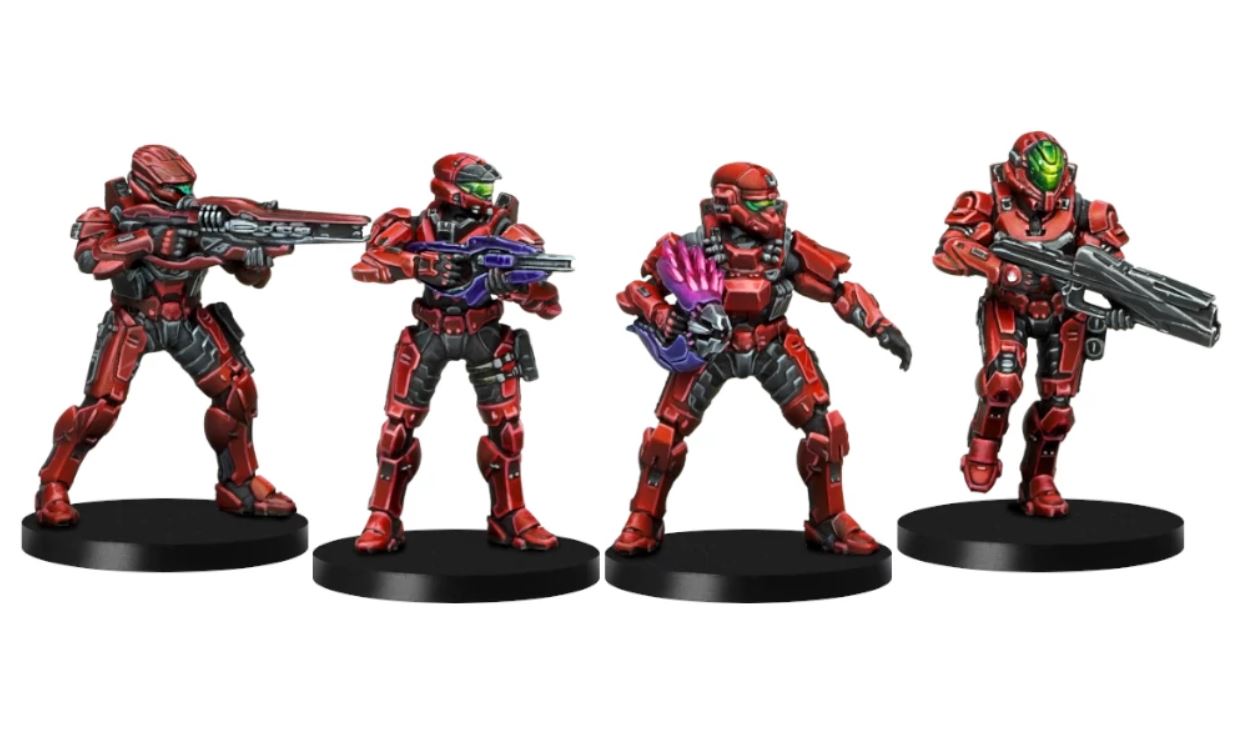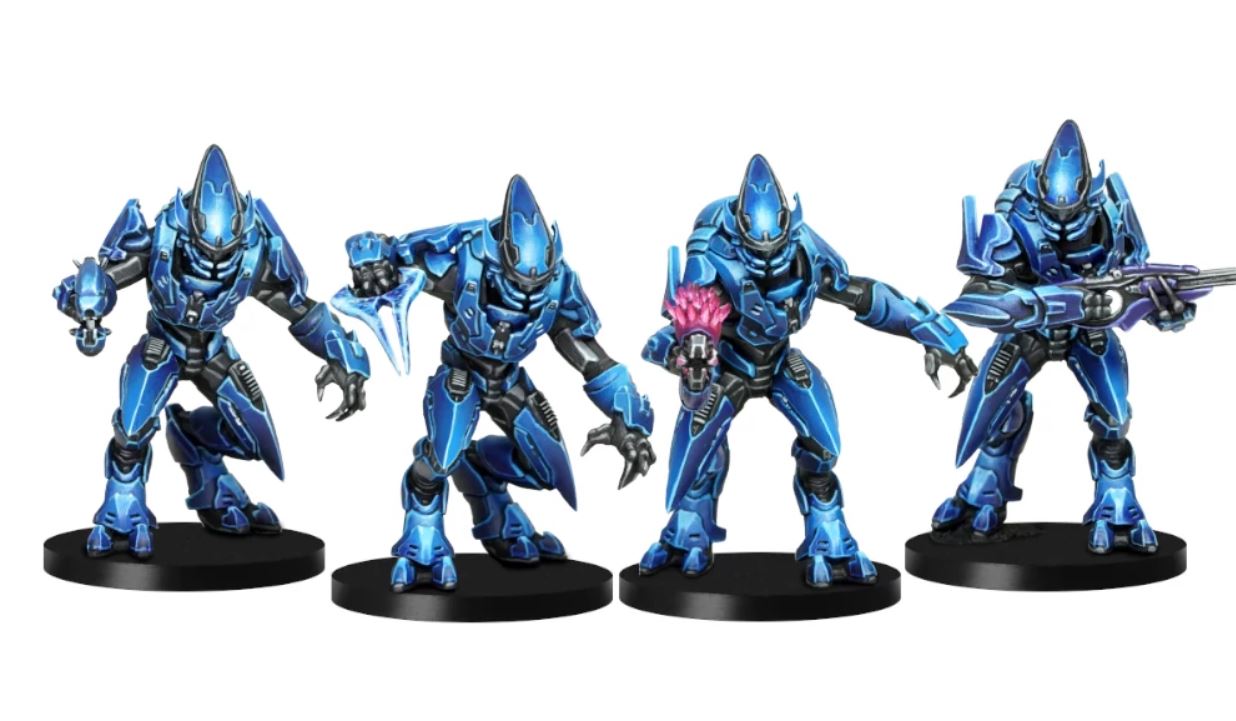
First announced in January, Mantic Games’ Halo: Flashpoint makes its way into the world in November as the first wave of pre-orders start shipping out to eager fans. Polygon got a brief, early look at the miniatures skirmish game this week. While the launch product is a touch light on content, the building blocks are clearly in place for a vibrant and competitive tabletop franchise. Here’s what to expect as the British publisher gears up for its second wave of shipments.
Miniatures skirmish games have exploded in popularity in the past five years, with popular titles such as Warhammer 40,000: Kill Team, Infinity, Cyberpunk Red: Combat Zone, Star Wars: Shatterpoint, and Mutant Year Zero: Zone Wars, just to name a few. The appeal for fans is that you only need a few miniatures to play, meaning it can be fast and inexpensive to assemble and paint a viable fighting force. For publishers, it’s the low initial investment that makes these starter sets so compelling at retail. Add a globally recognized first-person shooter franchise with a highly invested, multigenerational fandom, and you’ve really got something.

When we award the Polygon Recommends badge, it’s because we believe the recipient is uniquely thought-provoking, entertaining, inventive, or fun — and worth fitting into your schedule. If you want curated lists of our favorite media, check out What to Play and What to Watch.
The good news is that the guts of Halo: Flashpoint were inspired by the rules of Mantic’s existing tabletop skirmish games — titles like Firefight and Deadzone. That means it’s fairly mature, and unlikely to require big changes in the short term. It’s also fairly easy to learn, so long as you’ve got a seasoned player to show you the ropes. That’s because the massive 47-page rulebook is, unfortunately, a bit of a drag with ponderous language and a few niggling typos.
Once you manage to plow through the copy, Halo: Flashpoint provides a highly lethal and fast-paced style of play. The d8-based combat mechanics include a “headshot” feature: When you roll an eight, you add another die to the pool you’re rolling for. It’s not a modifier to the roll; it’s a whole extra die that could effectively double the damage of your attack — or triple it, or quadruple it, or more, since every eight rolled thereafter adds yet another die to the total pool. Individual units’ special rules are also easy to understand and dutifully cross-referenced in the manual’s helpful glossary.

But what really has me buzzing is the movement system. It’s not grid-based, like a traditional board game or a game of Dungeons & Dragons might be. Instead, it’s cube-based, with multiple cubes stacked on top of each other in three-dimensional space. Flashpoint’s lengthy rules go into great detail about how precisely miniatures move through the playfield both horizontally and vertically. That could lead to some very interesting tabletop layouts.
Most miniatures skirmish games are played with terrain, but the rules for moving up and down that terrain to second- or third-story overlooks differ wildly from system to system. Halo: Flashpoint’s rules are virtually terrain agnostic, meaning that the type of terrain present on the table is largely irrelevant. So long as there’s somewhere for the miniature to stand up on its base, it’s a valid spot to place it on the table. The only thing players need to worry about is if there’s a way for a given miniature to clamber its way there. That means the ground you’re fighting over in no way needs to be flat — or even table-shaped.
Would you like to create a singular, narrow tower for your miniatures to fight over? How about two towers sitting across from one another with a deep and deadly valley in between? How about a complex set of interlocking catwalks around an industrial space? Or a wall-mounted board where your minis can climb or leap upward from platform to platform? What about a house rule where your minis are floating in zero gravity, held aloft by plastic risers or fishing line suspended from the ceiling? You could do the same thing for a battle underwater.

To the hobbyist in me, the possibilities are endless. And with the rich history of the Halo franchise in its video games, including its own in-canon take on historical miniatures and dioramas, I can see myriad opportunities for the community to go a bit wild with this one.
Halo: Flashpoint is currently available in two different starter sets. The less expensive option at £60 (about $78) is Halo: Flashpoint – Recon Edition. It comes with eight Spartan models with four different loadouts, plus all the dice, markers, and terrain you need to get started. The more expensive option, coming in at £100 (about $130), is called Halo: Flashpoint – Spartan Edition. It comes with twice as many Spartans, including those with additional weapons not included in the Recon Edition. The larger set also features four Elites, which serve as a preview of the new faction coming to the game in 2025. It also includes a handful of plastic bits to represent things like hatches, flags to capture, and more. There’s also a host of accessories up for pre-order on the Mantic website, including elaborate plastic terrain, additional miniatures, and files for 3D printing.
Pre-orders for wave two, expected in 2025, are available now.
Source




